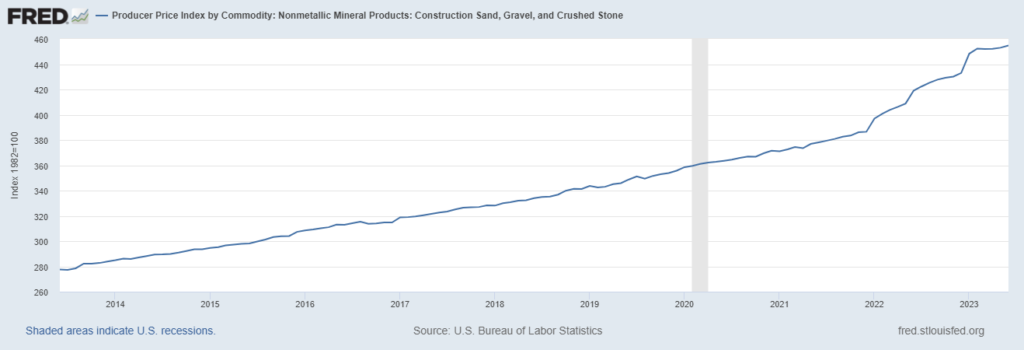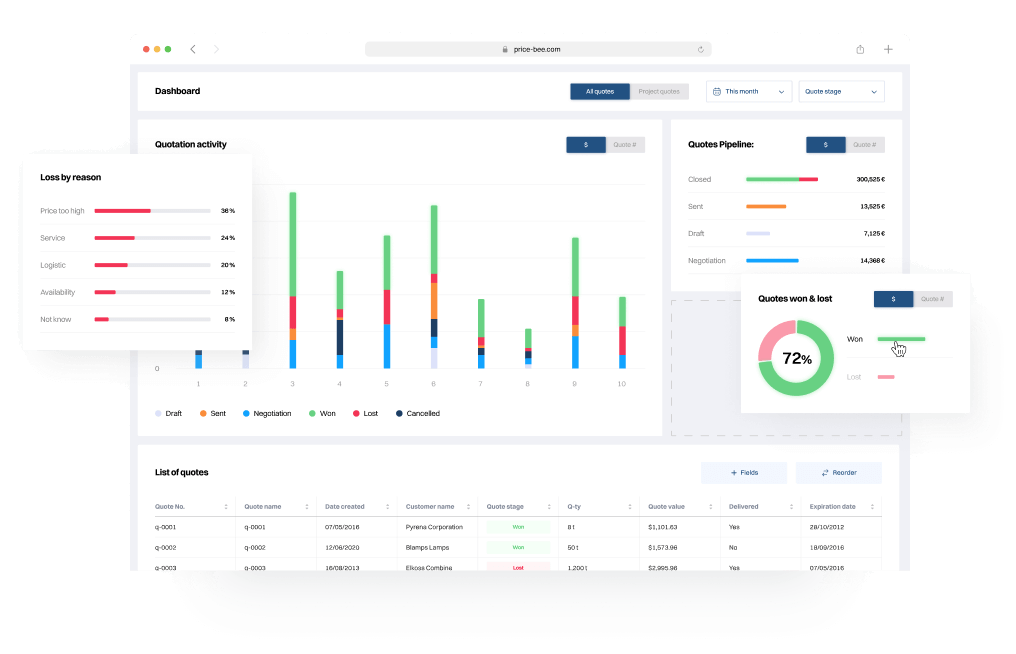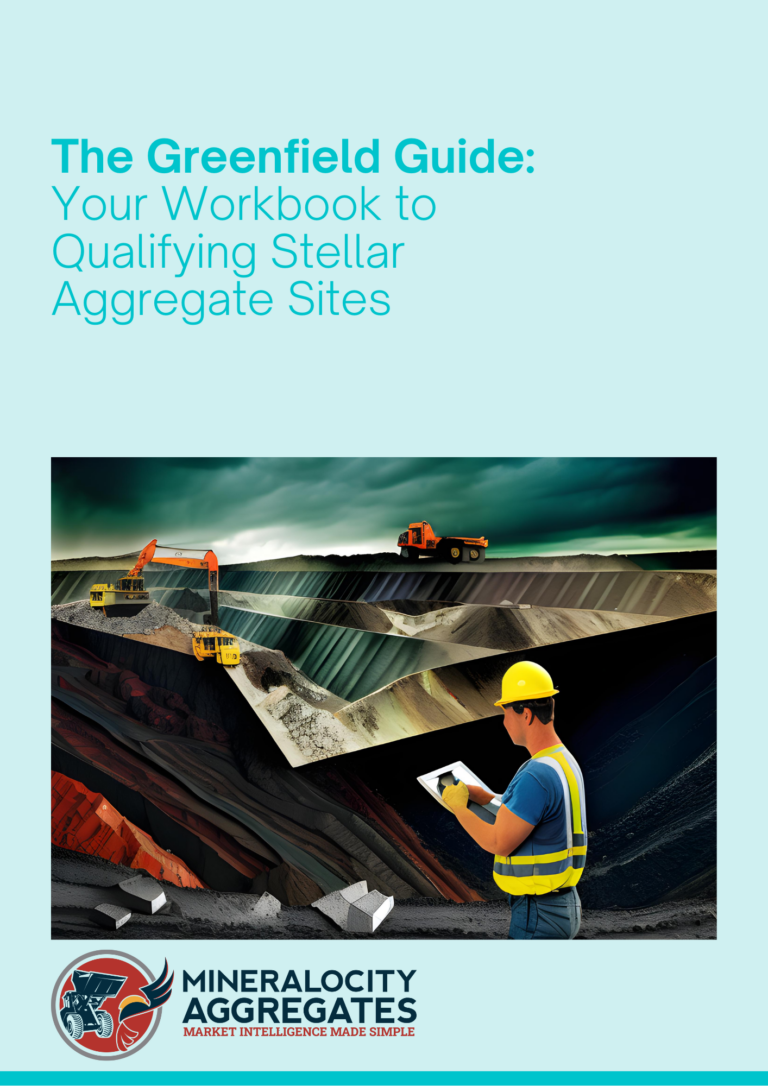In the competitive landscape of the construction aggregate industry, holding onto your market share is often as challenging as expanding it. The key to retaining your slice of the pie lies in proactive strategies that span across various domains, including pricing, customer retention, and innovation. In this guide, we’ll dive into each of these critical pillars and how they can be effectively managed for defending market share in the aggregate industry.
Pricing Strategies for Defending Market Share in the Aggregate Industry
Setting the right price for your aggregates is not just a matter of arithmetic; it’s a strategy that can make or break your market share. Pricing influences not only immediate sales but also impacts long-term customer relationships. Here’s how to wield pricing as a powerful tool for defending market share in the aggregate industry:
Understanding Your Costs
Before you even think about setting a price, it’s crucial to have a clear understanding of your production and operational costs. This includes everything from raw materials to labor, transportation, and overhead. Knowing your costs sets the floor for your pricing strategy and helps avoid selling at a loss, a cornerstone principle in defending market share in the aggregate industry.
Value-Based Pricing
Gone are the days when the lowest price won the customer. Today’s buyers are increasingly looking for value, which encompasses not just the product but also the entire customer experience. Can you provide faster delivery times? Is your customer service exceptional? Are your aggregates of higher quality compared to competitors? All of these factors can justify a slightly higher price if customers perceive they are getting better value.
Dynamic Pricing Strategies: A Real-World Example
In the volatile market of construction aggregates, static pricing can be a severe disadvantage. Consider implementing dynamic pricing, where prices are adjusted based on real-time market conditions such as fluctuations in demand, seasonal trends, or competitor pricing. For instance, a mine recently required customers to purchase one ton of concrete sand (of which they had an excess) in order to purchase a ton of gravel (which was more scarce and valuable in the area). This not only enabled the mine to move inventory efficiently but also provided customers with a bundled solution, meeting multiple needs in one transaction. Such innovative strategies can be automated using advanced data analytics platforms like Mineralocity Aggregates, which closely monitor market conditions and offer valuable insights for defending market share in the aggregate industry.
Discounting and Bundle Pricing: A Tactical Edge for Defending Market Share
Strategic discounting and bundle pricing are effective ways to increase sales volumes, thereby defending or even growing your market share. For example, offering a discount for bulk orders or longer-term contracts can incentivize customers to make larger, more committed purchases.
Communication and Transparency in Pricing
Any pricing strategy is only as effective as its communication. Make sure your customers understand your pricing model, what they’re paying for, and why it offers better value. Transparency can go a long way in building trust, an essential factor in defending market share in the aggregate industry. By meticulously crafting your pricing strategies, you’re not just setting a price; you’re defining the value of your brand and product in the eyes of the customer.
Customer Retention: The Lifeline for Defending Market Share in the Aggregate Industry
Keeping an existing customer is generally cheaper and more efficient than acquiring a new one. The aggregate industry is no different. Focus on customer service, transparent communication, and reliable delivery to keep your customers coming back. Additionally, customer loyalty programs or long-term contracts can be an excellent way to secure steady business while also locking in a portion of your market share.
Innovation: The Path to Sustainable Growth and Market Defense
The saying “innovate or die” holds particularly true in the construction aggregate industry. Innovation isn’t confined to the product alone; it extends to processes, supply chain management, and even customer interaction channels. Embrace technology solutions like the Mineralocity Aggregates platform to gather data-driven insights, predict future demand, and streamline operations.
Using Data to Your Advantage: Defending Market Share with Intelligence
Platforms like Mineralocity Aggregates not only assist in predicting future trends but also offer the ability to visually compare current and future supply and demand balances side by side. In an industry where the margins can be thin, these data-backed insights can be game-changing when it comes to defending market share in the aggregate industry.
Conclusion: Integrating Strategies for Defending Market Share in the Aggregate Industry
Defending your market share requires a multifaceted approach that spans pricing, customer retention, and innovation. While each of these pillars is essential, their true power lies in their integration. Utilizing platforms like Mineralocity Aggregates can offer invaluable insights and data, ensuring that your strategies are not just reactive but proactively aligned with market dynamics.
Intrigued by the strategies discussed in this article? To learn more, download our Top Aggregate Producers Report for 2023 and get ahead in your market share defense game.






